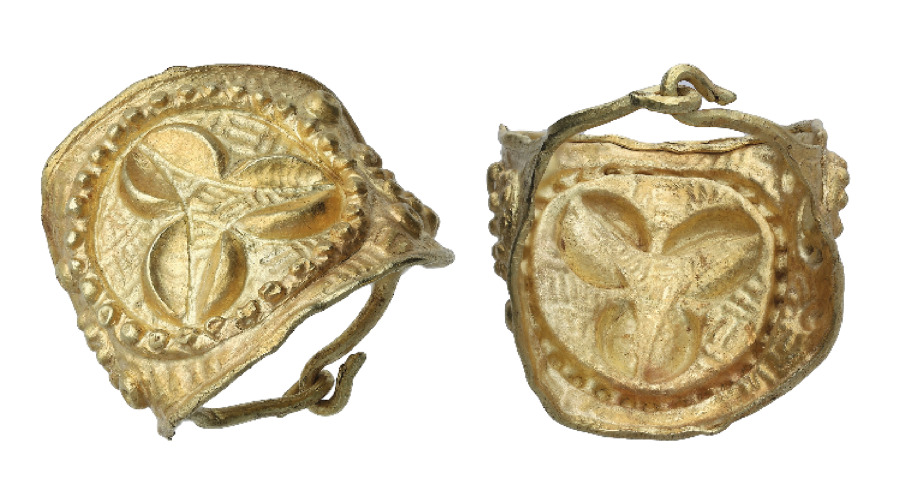Article

2 November 2022
THE UNIQUE KNARESBOROUGH IRON AGE GOLD RING
Snettisham in Norfolk has been the source of two exceptional hoards, one Iron Age, the other Romano-British. The former includes the Great Torc now in possession of the British Museum, while the latter, found concealed in a clay pot in 1985, was uniquely part of the stock of a local jeweller’s workshop.
Just over 150 miles away at Knaresborough in Yorkshire, what is now thought to be another product of the Snettisham workshop was found in 1994.
The Knaresborough Iron Age gold ring is itself a unique and highly important artefact. Having examined it, the British Museum suggested that it came from the Snettisham workshop, highlighting its importance as the only surviving finger ring of this style.
The North Yorkshire coroner declared the ring a stray find and therefore not Treasure under the Treasure Trove law, and it has been in a private collection ever since, coming to auction for the first time now.
Dating to circa 100 BC, the 22mm diameter, 5.41g gold ring is formed from sheet gold and die-hammered from behind (repoussé), creating in high relief a trefoil shape from three pairs of crescent lips in the centre of the large oval bezel.
It is bordered by a ring containing twenty-nine equally spaced pellets, while the sloping and tapering shoulders are decorated with a central berried rosette flanked by annulets on each side; the field is entirely decorated with broad cross hatching or basketry infilling which is a secondary punching made from the front of the ring.
The narrow hoop is circular in section and looped together at the back.
Gold in Iron Age Britain had been used conservatively in the 3rd and 2nd centuries BC, but British tribal nobility revived its importance and status during the 1st century BC.
This ring represents the Snettisham style V ornamentation (from the hoard of gold torcs and armbands found in Norfolk in 1948) which is a distinctive abstract British style that has become synonymous with the royal treasury of the Iceni tribe that ruled a large part of East Anglia.
The execution and refinement of the sheet gold work from Snettisham is unparalleled on the continent. In Yorkshire bronze workshops from the 3rd century BC are thought to have developed the style of art which peaked with the Snettisham ateliers.
Nigel Mills, Consultant (Artefacts and Antiquities) at Noonans, said: “It is the most exciting ring I have had the pleasure of examining and is likely to have been worn by an Iron Age chieftain from the Corieltauvi tribe which inhabited Yorkshire at that time.”
The estimate is £24,000-30,000.
Additional Links
The following links are related to this article:
Share This Page